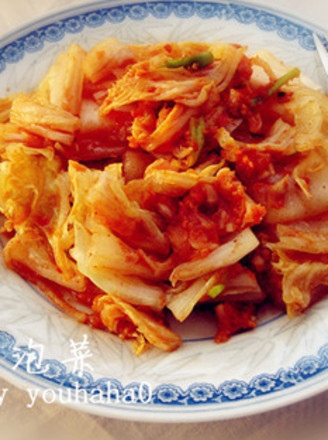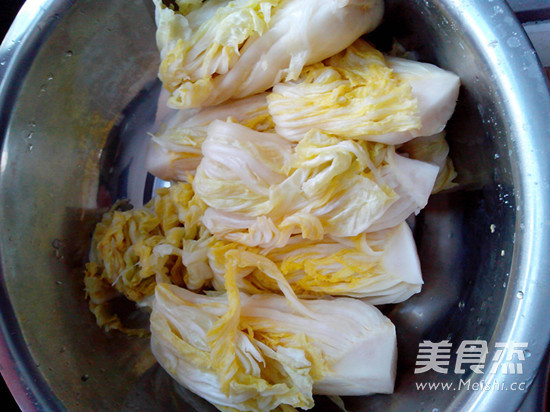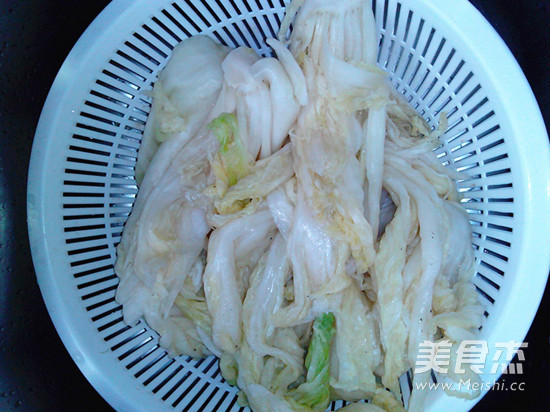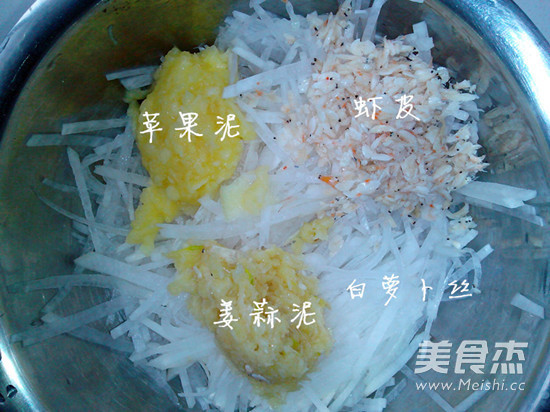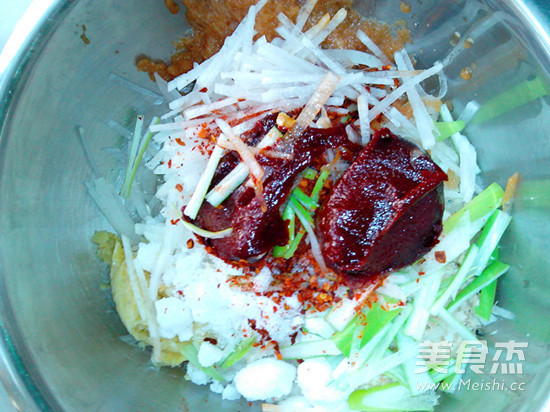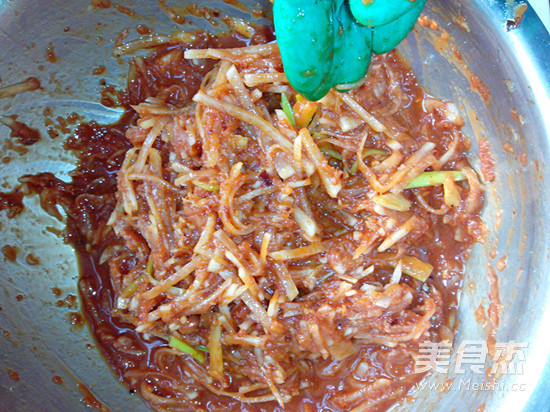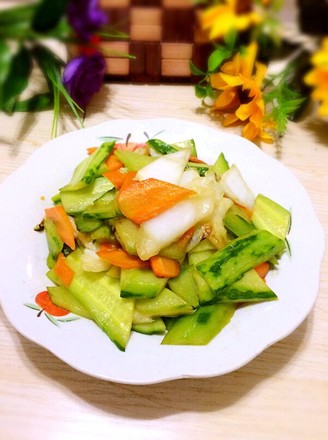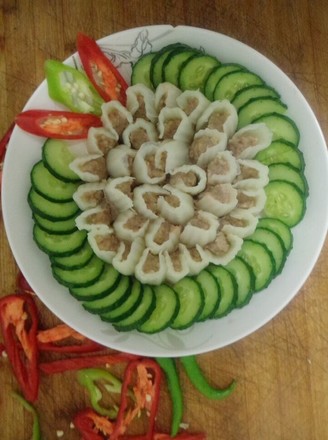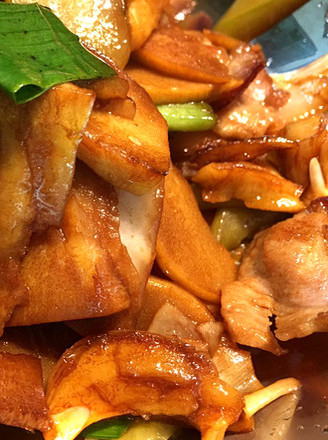Korean Cabbage Kimchi
1.
Remove the old Chinese cabbage, wash it, or you don’t need to wash it. It will be washed after marinating. All four pieces (vertical) or two pieces, according to the size of the cabbage, separate the leaves and sprinkle enough salt, marinate for 8 hours or overnight, and marinate. A lot of water, if there is not much water, there is not enough salt, then sprinkle salt
2.
Pickled cabbage will produce a lot of water. By the way, wash the cabbage with the pickled water. The cabbage mentioned above can be washed without washing. Wash it here and taste the taste. If it is too salty, rinse with cold boiled water or purified water until it tastes salty. Moderate, pinch dry with your hands, put in a basin for later use
3.
Wash the white radish, cut into thin strips, put it in a seasoning bowl, chop the washed shrimp skin, put it in a bowl, peel the garlic and ginger, mash it with a garlic mortar, peel an apple, rub the mud into the bowl
4.
Add sugar, Korean chili sauce, and chop the green onions into a pot
5.
Put on gloves and stir the sauce evenly
6.
Separate the leaves of the cabbage and spread the marinated radish. After all the cabbage is spread, put the cabbage in a fresh-keeping bag, pour the remaining seasonings, tie the bag tightly, leave it at room temperature for one day, and put it in the refrigerator. Preserve; you can also put the cabbage directly in the refrigerator, and you can eat it after 2 days; if you like leeks, you can add a little bit of leeks before the mouth, and if you like coriander, you can add a little coriander.
Tips:
The kimchi made with Korean chili paste is more beautiful in color, and the spiciness is lower than that made with chili noodles. In addition, no fish sauce is used, but shrimp belts are used for umami.

